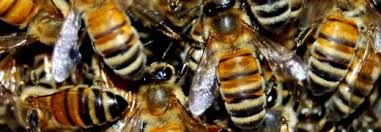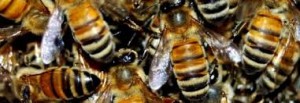We are already very much familiar with the intelligence of bees. We have seen that they are pretty good at facial recognition. Also, researchers have proven them to be effective air quality monitors. Astonishingly, it was found that bees can even beat computers in some instances. Bumblebees can solve the popular ” Traveling Salesman ” problem much faster than modern computers. Recent studies reveal that they learn to fly the shortest possible route between flowers even if they are randomly ordered. Its a NP-hard problem and bees are the first animals to figure this out according to Queen Mary University of London researchers.
But have you ever wondered how bees can become an integral part of a CT-Scan. Well, it may sound astounding, but a waggle dance of bees is of much more significance to us than it seems.
Honey bees live in colonies and show many features like bee foraging, bee dance, task selection, collective decision making, nest site selection, mating, pheromone laying and navigation systems. Such features inspired Karaboga and Basturk to develop Artificial Bee Colony Algorithm. Its one of the most popular algorithms modelling the behavior of foraging bees. Based on this algorithm a proposed approach has been developed for edge detection in images, thus playing a vital role in image processing.
The algorithm uses the concept of an artificial bee colony consisting of Employee bees who look for food sources, Onlookers and Scouts. Number of employee bees is equal to the number of food sources which is further equal to number of onlookers. Scout bees are dependent on food source conditions.A similar analogy is followed for edge detection. Number of food source or employed bees is given by located source number which is half of root of product of number of rows and number of columns in image.
By the number of the source, employed bees are randomly distributed on the image. The coordinate data of the navigated sources, the gray level values, fitness value, failure counter, probability, the source is banned or not data are held. The advantage of this algorithm is that exploration and exploitation is carried on simultaneously unlike ant colony which requires backtracking. In this study, fitness function of ABC algorithm is gray level value of resources.
First, fitness functions are computed and then probability values are computed based on fitness values. Navigated source’s probability and one of its neighbor’s which is selected randomly, probability are compared. Thus, randomly navigated resource has been improved.
If the neighbor’s probability is higher than located resource’s probability, failure value increased 1 and they are checked for is equal or not. If these values are equal, the located source becomes banned and scout bee number is increased. Afterwards bees don’t locate on these banned sources.
After all computes, located sources are determined and then we can analyze these sources (pixels) for belonging to any edge line. If the calculated gray level difference is higher than the specified value what its mean is boundary value for thresholding, the located source is determined as edge pixel and that pixel’s coordinate on the result image are set 1 .
This is a major coup in the field of evolutionary algorithms. Researchers have proven from time to time that bees are highly sophisticated problem solvers and understanding their brains do help improve our understanding of various network problems and evolutionary algorithms.
Well, bees indeed are much beyond just honey and when it comes to intelligence, size apparently does not matter.
Click here for government certification in Information Technology





11 Comments. Leave new
Great work!
Wow! I never knew so much about bees and I’m glad i read the blog since it was quite informative and interesting. Great work. Keep writing 🙂
Good work. Interesting one!
Who knew bees were such pieces of art.
I never knew this much info on bees.. Good work..
A good piece of work
What a piece of information.
Very informative article
interesting article!
All these features on a computer makes it more powerful 🙂
great…